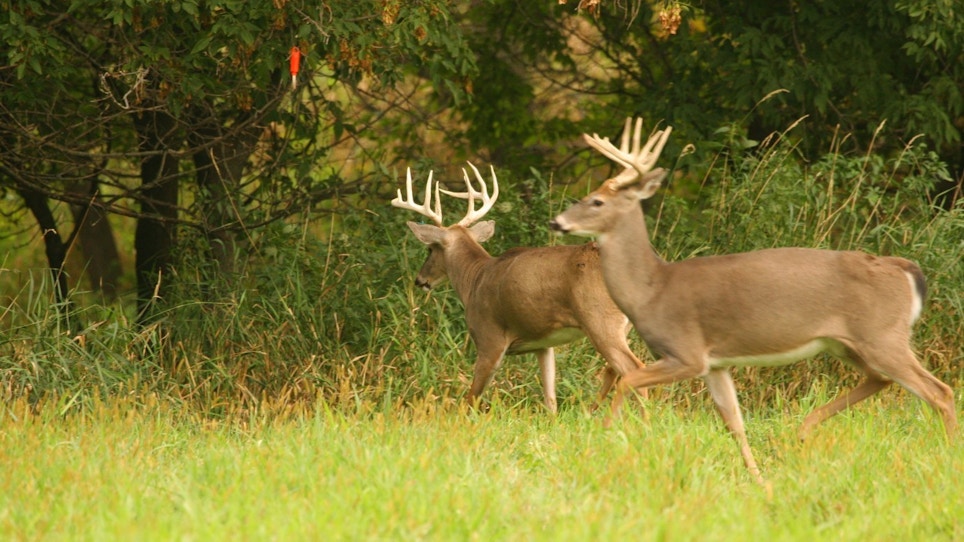Chronic Wasting Disease (CWD), a contagious neurological disease that slowly kills every deer, elk or other cervid it infects, poses a serious threat to ungulate populations throughout North America. To date, it’s been identified in 26 states and four Canadian provinces. To their credit, state wildlife agencies have responded to this threat by taking serious steps to try to stop its spread. One of those steps by some states has been banning the use of one of the most popular and effective centuries-old hunting techniques — the use of scents taken from live deer.
“CWD is a growing concern,” said Sam Burgeson, president of Wildlife Research Center, makers of the popular urine-based Golden Estrus line of attractant scents and Scent Killer scent-eliminating products, among others. Burgeson is also the first president of the newly-formed Responsible Hunting Scent Association. “Wildlife agencies are under great pressure to take action towards stopping the spread of this disease, such as population management, carcass transport restrictions, live deer movement restrictions, and unfortunately, in some cases, less scientifically-supported measures.”
With CWD a growing concern among both scientists and sportsmen, and the feeling by some that the use of urine-based scent products might pose the threat of bringing CWD to areas where it heretofore has not been found, what’s the future hold for the scent industry, and for the millions of hunters who depend on these products annually?
When questions about urine and CWD first surfaced, several prominent hunting scent companies began reaching out to leading experts and researchers for answers. Even though the use of urine in hunting scents has been shown to pose almost no risk of CWD, manufacturers collectively embraced the science and continued to pursue ways to make their products even safer.
“With the help of the Archery Trade Association, our industry worked with wildlife agencies, disease experts, and industry experts to develop the ATA Deer Protection Program (DPP) — a robust certification program, launched in March 2016 — to bring their practices to an even higher level,” Burgeson said. “This program requires increased monitoring, inspections, closed herds, and facility requirements well beyond what is required by the United States Department of Agriculture.” Through this program, participating scent manufacturer members are committed to using urine from facilities that are taking steps above and beyond those required by the APHIS (Animal and Plant Health Inspection Service, an agency of the U.S. Dept. of Agriculture) Herd Certification Program to further reduce the potential of CWD being present in their deer herds.
“Since then, our industry took further steps, investing in science and research that led to a commercially available testing process specifically designed for checking deer urine for CWD, utilizing a widely accepted technology called RT-QuIC,” Burgeson continued. “It’s the same technology being used by several major universities working on cutting-edge CWD research.” Through their participation in the DPP, manufacturers guarantee that cervid urine utilized in their products comes only from facilities that are also participating in the DPP and that strictly comply several safety measures.
In April 2021, the management of the Deer Protection Program (DPP) was transitioned from the ATA to the RHSA, which was formed in December 2020 as a 501(c)6 trade association. RHSA is focused on maintaining and strengthening the DPP to ensure that hunters and wildlife managers have access to urine-based scents that have strong safeguards in place to protect against CWD. RHSA’s primary goal is to ensure a healthy future for the scent industry by contributing to a healthy future for wild deer. More information on the organization, a list of its members, and a summary of its efforts can be found at the organization’s website.
Obviously, scent manufacturers have a lot at stake here. “We sought out the most recognized and published authorities regarding CWD transmission via urine to get their expertise,” said Phil Robinson, CEO of Tink’s. “We are 100 percent confident that our products pose no risk of spreading CWD. The RT-QuIC test is just a confirmation of that fact.”
“We support reasonable science-based approaches to fight CWD and applaud states that have worked with us to create adaptive regulations that allow the use of responsible scent products,” Burgeson said. “We continue to try to work with states that have taken more draconian measures on urine-based scents that do nothing to stop the spread of CWD. Hunting regulations are always changing and under review, and to that end, hunters should review their state’s publications each year for detailed, up-to-date rules and regulations concerning the legalities of urine-based scent products.”
Currently, Arkansas, Connecticut, Idaho, Nevada, New Mexico, Oregon, Rhode Island, South Carolina, Vermont, and Virginia have various bans on the use of hunting scents. Alabama, Michigan, Mississippi, Montana, Kentucky, and Tennessee have adopted rules or regulations allowing the use of DPP-certified scent products. “Louisiana has adopted regulations that require RT-QuIC testing, and it is hopeful that other states will follow their lead rather than pursuing blanket bans that prohibit traditional hunting methods and would hurt responsible hunting product companies,” Burgeson said.
The bottom line for all of us is clear — CWD is serious business, and as such, stopping its spread needs to be taken seriously. When it comes to urine-based hunting scent products, using only products collected from certified facilities seems to make a lot of sense. These products will clearly display the Deer Protection Program checkmark and RT-QuIC tested logos on the packaging.
Attractant “in estrus” scent products are by far the most widely sold. Are these products an important part of your business? What’s your take on the newly-formed DPP and its efforts? Drop me a note at editor@grandviewoutdoors.com and share your thoughts.






